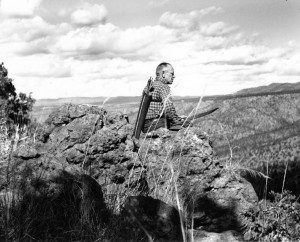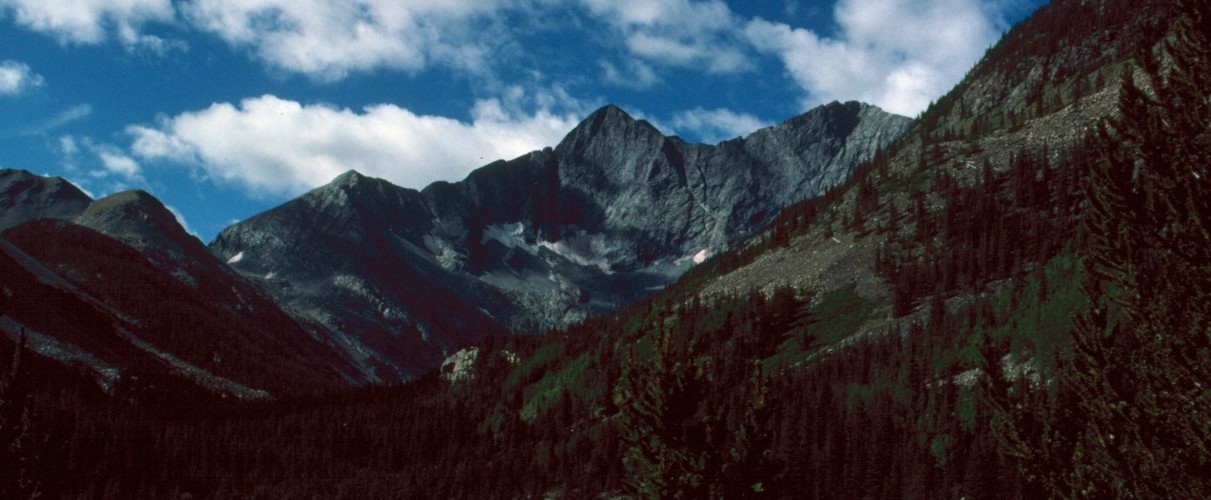Aldo Leopold: Some Fundamentals of Conservation in the Southwest
MECHANICSVILLE, Va. — “Some Fundamentals of Conservation in the Southwest” was an unpublished (in his lifetime) manuscript by Aldo Leopold, author of the more famous environmental work, A Sand County Almanac, and Sketches Here and There.

Aldo Leopold sitting on rimrock along the Rio Gavilan in Mexico. (Starker Leopold/Aldo Leopold Foundation)
A Sand County Almanac was published in 1949, just after Leopold had died of a heart attack while helping a neighbor fight a wildfire on his farm in Wisconsin. The book was a seminal work of nature writing that, with his capstone section, “The Land Ethic,” helped implant the notion of environmental ethics in the American, and ultimately global, consciousness.
Nevertheless, Leopold, a pioneering forester and land manager who, through his position in the U.S.D.A. Forest Service, helped establish the world’s first official wilderness area—the Gila Wilderness in New Mexico—in 1924 and subsequently co-founded the Wilderness Society in 1935 with Bob Marshall, Robert Sterling Yard, Harvey Broome, Harold Anderson, Ernest Oberholtzer, Bernard Frank and Benton MacKaye.
A Sand County Almanac had a tremendous effect on my thinking about my relationship with the environment once I finally read it—one of my former undergraduate professors, Steve Lynch, strongly encouraged me to read it, but I failed to act on his suggestion for nearly two decades. I will discuss the book on this blog eventually, but today it is time to talk about “Some Fundamentals,” which predated A Sand County Almanac by more than 20 years.
Leopold wrote “Some Fundamentals of Conservation in the Southwest” in the early 20s. The manuscript, dated 1923, was discovered among his unpublished papers by the scholar Eugene Hargrove, who was looking for material for a new journal, Environmental Ethics, which was inaugurated in 1979.
“Some Fundamentals” is not quite finished. The reprinted version contains blanks for statistics Leopold intended to fill in later. Statistics aside, however, the paper represents Leopold’s rather advanced—and still relevant—thinking about the relationships we have with the non-human world around us.
The paper begins with an assessment of the resources of the Southwest as well as of the major environmental issues affecting the region. Some of the assessment is dated—for example, he devotes a good bit of time discussing the 11-year drought cycle that appeared to be common in the region. He refers to the then-current work of pioneering dendrochronologists Andrew Ellicott Douglass (misspelled Douglas) and Ellsworth Huntington, who were seeking a relationship between the 11-year sunspot cycle and periodic drought. I do not believe the evidence Douglass and Huntington found for that relationship is as equivocal as they thought back then. (To be fair to Douglass, the statistical methods available to him at the time were somewhat inadequate to the task at hand.)
Nevertheless, “Some Fundamentals,” is a remarkably forward-thinking document in which Leopold challenges some of the practices of the time—which we unfortunately continue today:
The point is that, if every eleven years we may expect a drouth, why not manage our ranges accordingly? This means either stocking them to only their drouth capacity, or arranging to move the stock or feed it when the drouth appears. But instead, we stock them to their normal capacity, and, when drouth comes, the stock eat up the range, ruin the watershed, ruin the stockman, wreck the banks, get credits from the treasury of the United States, and then die. And the silt of their dying moves on down into our reservoirs to someday dry up the irrigated valleys—the only live thing left! (Leopold 1923, 306)
While Leopold refers primarily to overgrazing in this paragraph, the question he raises applies to many other environmental issues, such as climate change—basically, will we live within our biosphere’s means, or will we trash it (as usual) and hope for some miraculous rescue that may, in fact, never come.
As with A Sand County Almanac, the final section of the essay, “Conservation as a Moral Issue,” addresses the ethics of our relationship with the world around us. In it he finds inspiration in the Old Testament, specifically Ezekiel, who challenged the Israelites over their wasteful uses of their land, “Seemeth it a small thing unto you to have fed upon the good pasture, but ye must tread down with your feet the residue of your pasture? and to have drunk of the clear waters, but ye must foul the residue with your feet?” (Ezekiel 34:18).
Nature has its place, Leopold said, that even worshipers of the Judeo-Christian god should recognized:
It just occurs to me that … God started his show a good many million years before he had any men for audience—a sad waste of both actors and music—and in answer to both [people of faith and of science], that it is just barely possible that God himself likes to hear birds sing and see flowers grow. (Leopold 1923, 310)
Leopold also finds inspiration in the work of the Russian philosopher Peter D. Ouspensky, who—anticipating James Lovelock’s Gaia hypothesis by several decades—suggested that the Earth itself is living being, but that is, according to Leopold, not recognized as such because its scale is too large and its life processes too slow for us to notice.
Leopold goes on to point out the transience of human culture, noting that at least five separate groups have dominated the region in the past millennium, each yielding to a newer, more technologically advanced, set of invaders before leaving little but a handful of ruins in their wake. But none of those predecessors—including the Cliff Dwellers, Pueblos, and Spanish—left nearly so much ruin in their wake as our current culture has.
Leopold ends “Some Fundamentals” with a question whose answer is very much in doubt in the year 2015:
… And if there be, indeed, a special nobility inherent in the human race—a special cosmic value, distinct from and superior to all other life—by what token shall it be manifest?
By a society decently respectful of its own and all other life, capable of inhabiting the earth without defiling it? Or by a society like that of John Burrough’s potato bug, which exterminated the potato, and thereby exterminated itself? As one or the other we shall be judged in “the derisive silence of eternity.” (Leopold 1923, 311)
REFERENCES
Leopold, Aldo. 1923. “Some Fundamentals of Conservation in the Southwest.” Environmental Ethics 1: 131-141. (Reprinted, with corrections and annotations by J. Baird Callicott, in J. Baird Callicott. 2013. Thinking Like a Planet: The Land Ethic and the Earth Ethic. New York, Oxford University Press, 303-311.)
